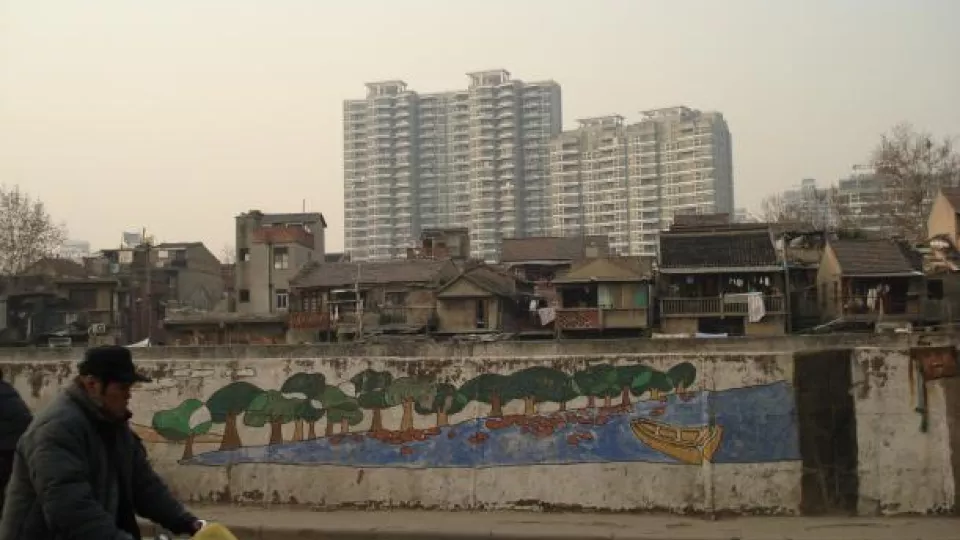What have been the major changes in China since the reform and opening, both for society as a whole and for the Chinese people? Can you give any concrete examples of how life has changed for the Chinese people?
Over the past forty years China has seen socioeconomic transformation at a pace and scale unprecedented in human history. For much of this time the country’s economy has experienced annual double-digit growth, while at the same time the basic structures of society have been radically altered. In practical terms, this means that life in China today is tremendously different than it was on the eve of the reform and opening period in almost every way imaginable. For instance, in urban areas people are no longer allocated housing by their jobs (or ‘work units’), but now must purchase or rent accommodation. This has afforded people new freedoms, but has also made it very difficult for those without large amounts of capital to live in the cities. Another major change is that restrictions on movement have been loosened, meaning that people can travel around the country relatively freely. This has resulted in a migrant labour force of a few hundred million people moving around the country to work in factories, construction, and other sectors. Most of these people are from poor rural areas, and remit a large portion of their earnings back to their families—mainly comprising elderly relatives taking care of young children. This has meant that many households in rural China are now much better off than they were four decades ago, but the demographics and culture of rural China have changed as young people leave to work outside rather than staying in their hometowns to farm.
What are the main achievements and positive outcomes, as well as the downsides of the reform and opening? What have been the main factors contributing to the ‘Chinese miracle’?
China can rightfully claim major achievements in a number of areas. After four decades of rapid growth China is now the second largest economy in the world, and has become a major player on the global stage. Poverty alleviation over this period has been unprecedented, and the material wellbeing of hundreds of millions of citizens has been dramatically improved—particularly in the countryside. My research is based on fieldwork in rural areas, and when I ask elderly people who have lived through this period if their lives have improved, most would say yes. These developmental successes have derived from China’s integration into the global economy, and also can be credited to hands-on economic management by the government at different levels. However, the liberalisation of China’s economy has undoubtedly had adverse outcomes as well. The pursuit of economic growth at all costs has dramatically deepened inequality, particularly between rural and urban areas. Those who have not been able to capitalise on the changing socioeconomic situation have found themselves increasingly left out of the ‘Chinese miracle’. China’s rapid economic development has also resulted in environmental catastrophe on a scale that is almost unimaginable, and which is impacting human life in ways that we do not yet fully understand.
Looking forward, what are China’s main challenges for the future?
China and its ruling Communist Party face tremendous challenges. Governing the country is notoriously difficult, which is why at so many points in history China has been divided, fragmented, and in the throes of civil war or rebellion. At the present moment the government is facing down serious problems related to economic slowdown, shifting demographics, unrest in certain segments of society, as well as the rapidly increasing inequality and widespread environmental degradation mentioned above. The Chinese government is well aware of these challenges, and spends huge amounts of energy and resources attempting to mitigate them. However, the main problem facing the Chinese government and people is the fact that the entire post-reform political economy of development is premised on a mode of economic organisation that continually reproduces these contradictions. Therefore, in order to effectively address these serious issues there needs to be a fundamental reorientation of the socioeconomic system.
What are your hopes for the upcoming conference?
This conference aims to provide a venue for critical reflection on the past four decades of reform and opening in China. The Centre for East and South-East Asian Studies was fortunate to receive a grant from the Birgit Rausing Language Programme to bring Chinese scholars to Lund, and we have also invited speakers from Europe and Australia. The conference events are being hosted at the Asia Library, the School of Economics, and the Department of Sociology. We are bringing together scholars from different fields who will look at important areas such as economics, rural development, politics, legal developments, gender issues, and more. As such, we aim to forge interdisciplinary connections and engage in discussions on the legacy of China’s reforms that are informed by a wide variety of perspectives.
About the conference:
The Conference “Assessing 40 Years of Reform and Opening in China” taking place the 23 -25 of January aims to provide a venue for critical reflection on the past four decades of reform and opening in China by bringing together scholars from different fields that will look at important areas such as economics, rural development, politics, legal developments, gender issues, and more.
The conference is organised by the Centre for East and South-East Asian Studies with funding received from the Birgit Rausing Language Foundation and the Swedish Research Council. The Centre also acknowledges support from the Department of Sociology and Department of Economic History in the form of facilities during two panels.
See the full programme here
